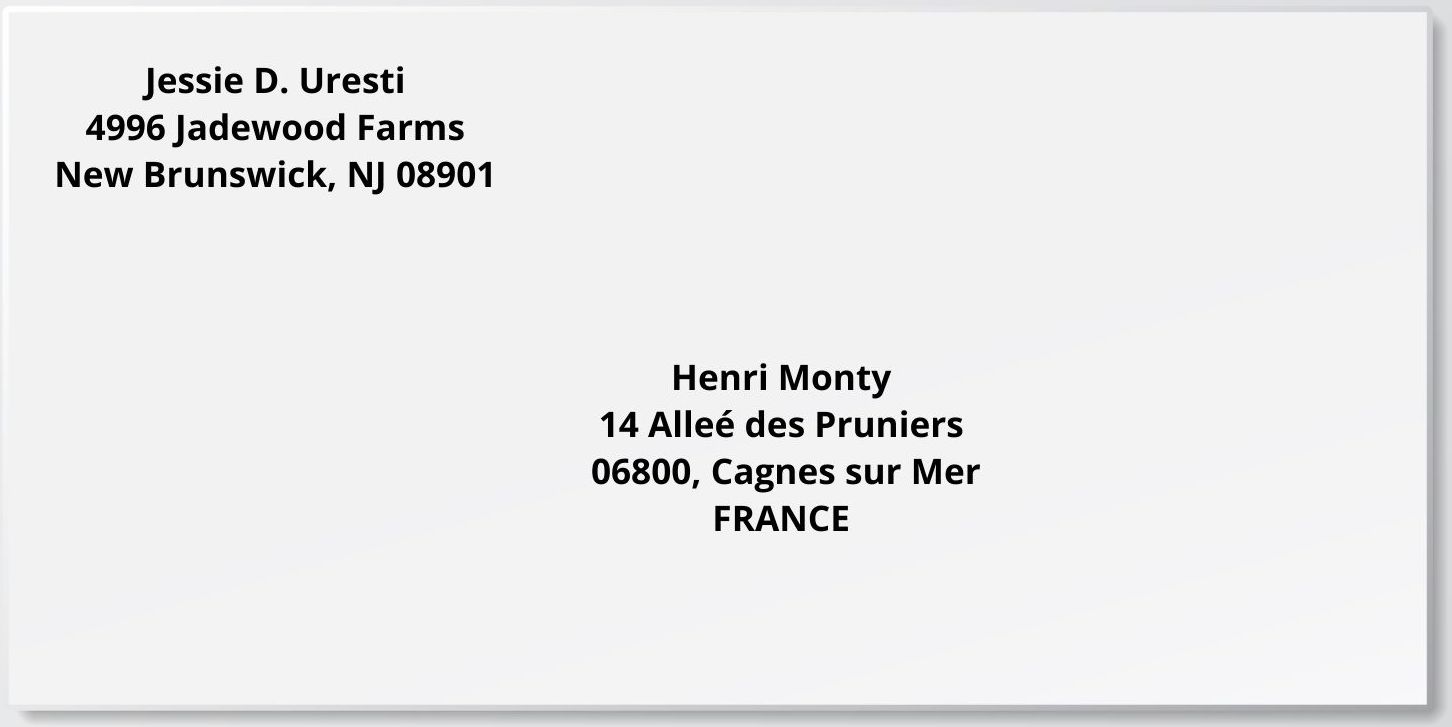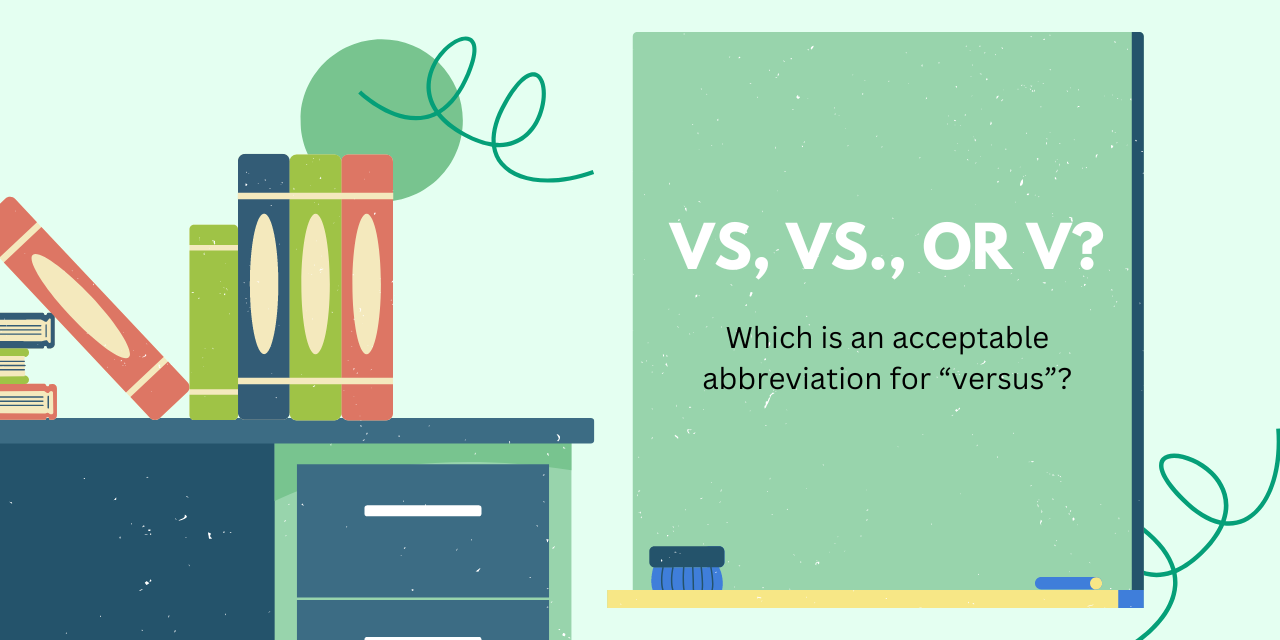In an age of texts and email, you might not write many physical letters these days. Even so, the ordinary course of business still requires workers to send mail. To be confident that your letters and packages arrive at their destinations, you need to know how to format an address properly.
To that end, let’s discuss what an address is and how you format it. In the process, we will offer some quick tips and examples for various types of addresses.
Defining an Address
In total, the information contained in an address allows mail carriers to identify and locate a letter’s destinations. Addresses have some or all the following information:
- Recipient name
- Organization name
- Street number and name
- Building number
- City, town, or village name
- State, territory, or similarly bordered region
- Postal code
An address might appear in several contexts. For example, it can head a formal letter or be in a contact list. However, an address’s crucial function is directing mail accurately.
Writing Addresses for Personal Letters
Generally, an envelope for a piece of personal mail requires two addresses: the sender’s address and the recipient’s address. Let’s start by discussing the sender’s address:
Sender Address
The main reason for including a sender’s address on a letter is, so a postal service knows where to return the mail if it is undeliverable. This address typically goes on the upper-left corner of the envelope. The address should include, in this order:
- The sender’s name
- The sender’s building number and street name.
- A suite or apartment number, if necessary
- The sender’s city, state, and postal code
For a sender in the United States, this is all the information you need to include.
Recipient Address
The recipient’s address goes at the center of your envelope. You should include the following information:
- The recipient’s name
- The recipient’s building number and street name
- A suite or apartment number, if necessary
- The recipient’s city, state, and postal code
This information is usually sufficient if you are sending a letter within the United States. The address’s format might vary based on where you are sending your mail. However, it will always go in the center of the envelope.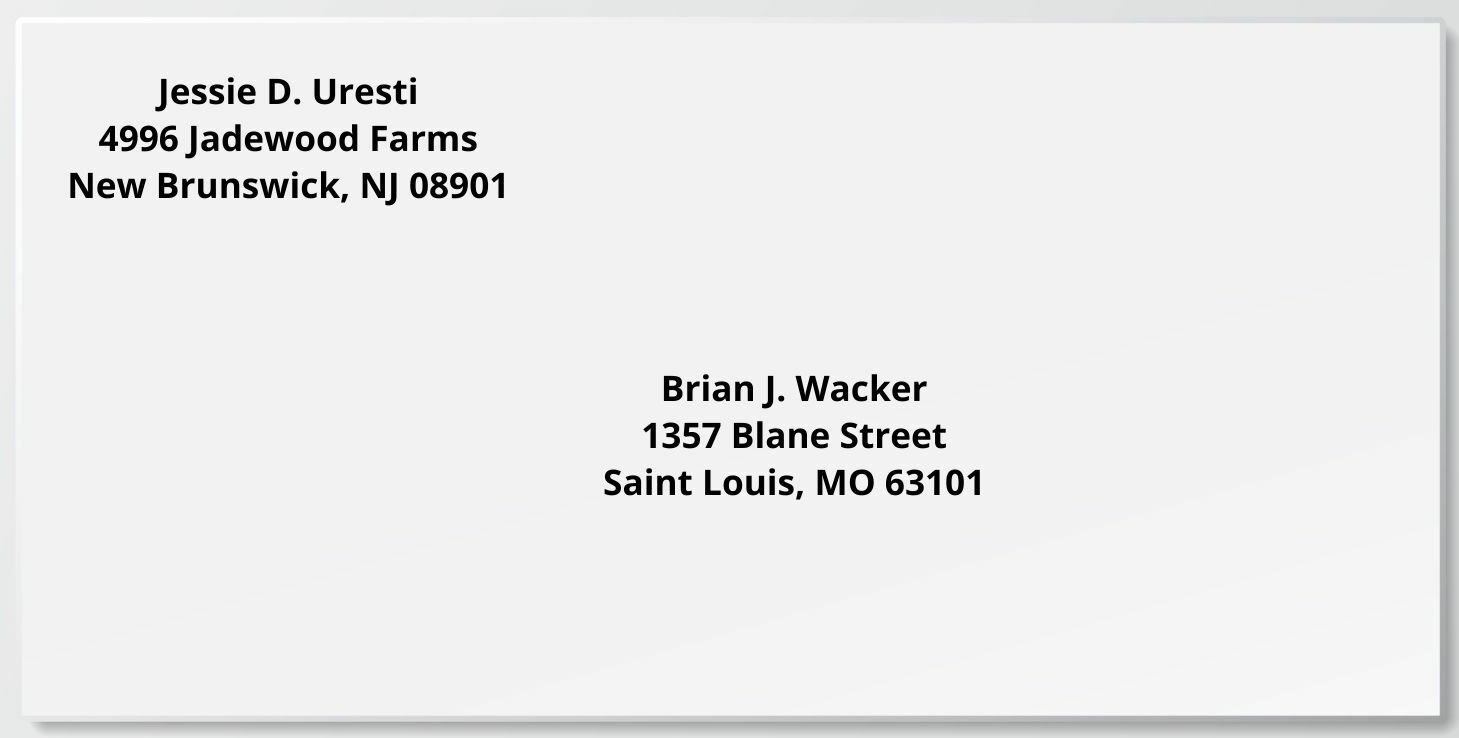
Writing Addresses on Professional Letters
Crafting an address for a professional letter is similar to that of a personal letter. However, when mailing a letter to a company, some additional information is necessary. Make sure to include the following information, in this order:
- The recipient’s name. You may elect to precede this with the word Attention: or ATTN:. You should also include honorifics and professional titles like Ph.D. or CEO.
- The name of the recipient’s organization.
- The recipient’s building number and street name
- A floor or suite number, if necessary
- The recipient’s city, state, and postal code
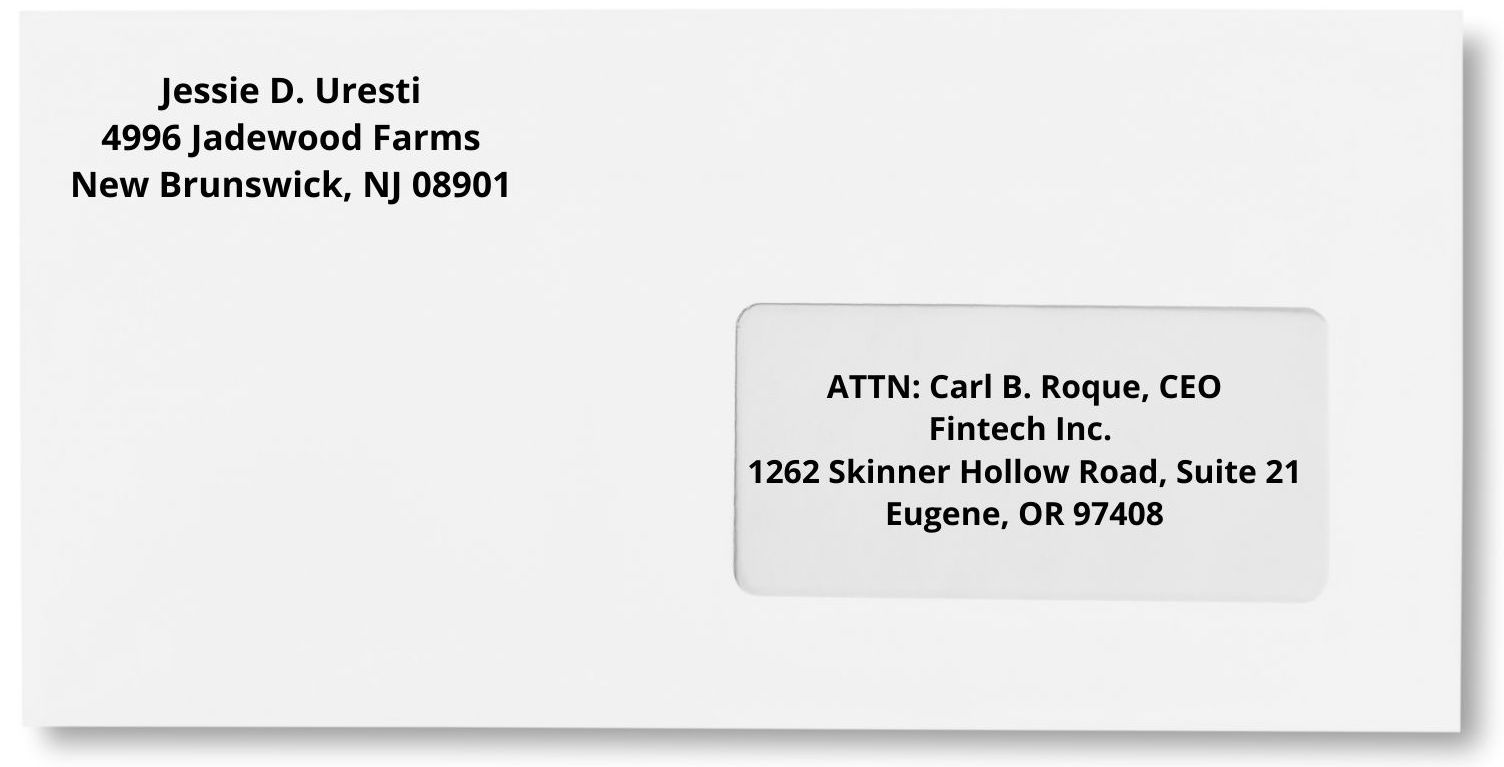
Writing Addresses for Military Mail
Formatting an address for a military installation presents some additional variables. Military addresses look similar to residential ones, but they aren’t identical. When you send mail to a military destination, format the address this way:
- The recipient’s name. Include the person’s rank, if appropriate.
- The recipient’s building number and street name
- Rather than listing a city, you need to record one of the following:
- The Diplomatic Post Office (DPO) for diplomatic locations
- The Fleet Post Office (FPO) for naval locations
- The Air/Army Post Office (APO) for Air Force and Army locations
- Rather than listing a state, you should list the recipient’s duty station. This means providing one of the following:
- AA, when sending to the Armed Forces America
- AE, when sending to the Armed Forces Europe
- AP, when sending to the Armed Forces Pacific.
- The postal code, which should include a supplemental four-digit code
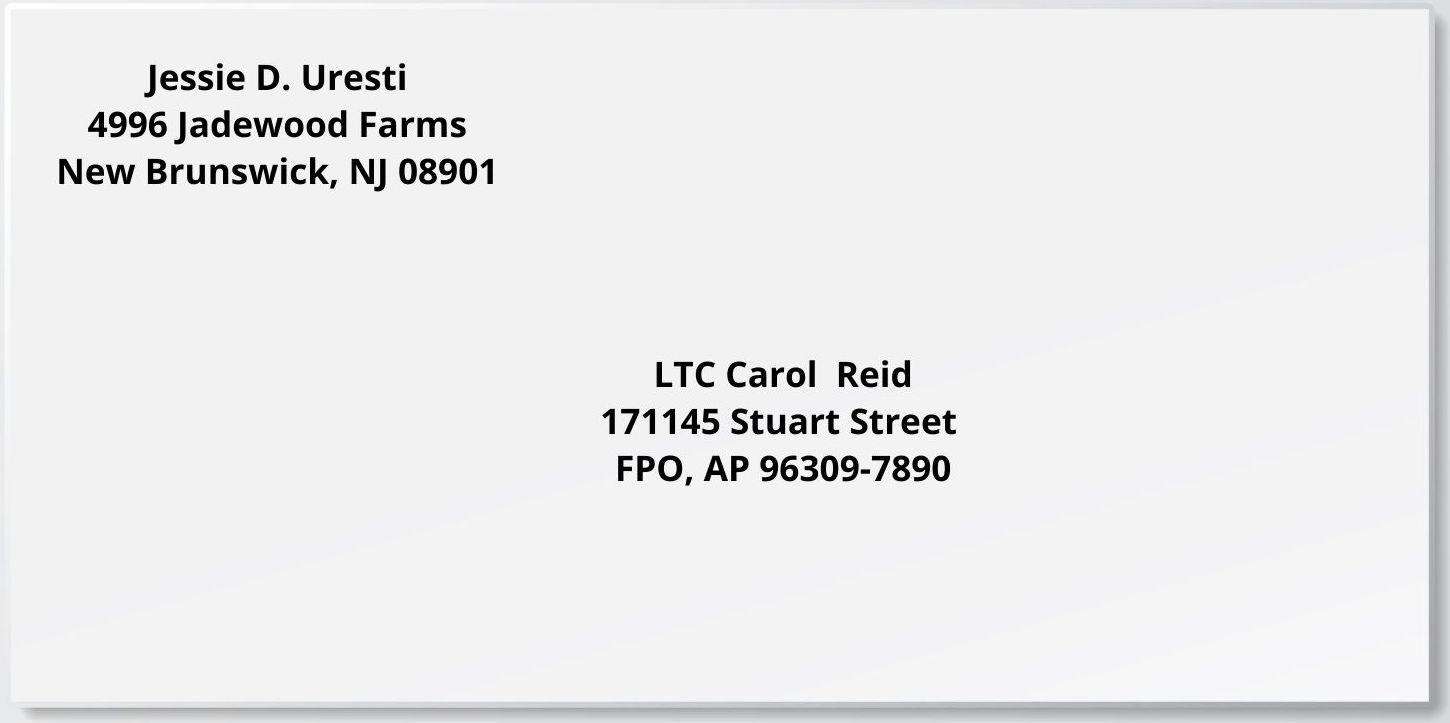
Writing International Addresses
In non-US addresses, there will be format variations depending on the country to which you are sending. It is imperative that you appraise yourself of all address requirements before sending.
With that caveat, here are some general guidelines for international addresses. You should include:
- The recipient’s name
- The name of the recipient’s house, if applicable. Particularly in rural regions, older homes and estates have established names.
- The recipient’s building number and street name. If the recipient’s house has a name, you might not need to include a street number.
- The recipient’s city, town, village
- You might need to add a line for the recipient’s county for more remote towns and villages. In this case, abbreviate County as
- The recipient’s postal code
- The recipient’s country
Other Things to Remember when Addressing a Letter
We have outlined general rules of formatting addresses. Other things to keep in mind when addressing an envelope or package are:
Where to Put Your Stamp
Without a properly affixed stamp, your mail isn’t going anywhere. Stamps always go on the top-right corner of your envelope. You only need one stamp for a standard letter weighing one ounce. If your mail weighs more than that, it might require additional postage.
Postal Code Formating
When sending mail within the US, you should always try to write out the entire postal code. This means including both the five-digit ZIP code and the area-specific four-digit suffix. Including both codes will ensure more efficient delivery. You should write these two codes on the same line, separated by a hyphen.
Careful Handwriting
Postal workers need to be able to read your envelope’s text to deliver it. As such, you need to ensure your handwriting is legible. The best practice is to use capitalized block letters in dark ink. It would be best if you also avoided ornate script that might be hard to decipher.
Omitting Extraneous Information
In general, you should include only address information on your envelope or package. Including extraneous information below the address can confuse the automated sorting machines the Postal Service uses. These issues will cause a mail delay.
Correct Address Abbreviations
There are many commonly accepted abbreviations for use in addresses. Here is a list of the most prevalent:
| Apt | Apartment |
| Blvd | Boulevard |
| Dr | Drive |
| Ln | Lane |
| Pkwy | Parkway |
| Rd | Road |
| St | Street |
| Ste | Suite |
| E | East |
| N | North |
| S | South |
| W | West |
Comma Usage
Finally, always keep in mind where you should place commas in an address. If you need to write an address in a message, commas should go between the recipient name and street address. Also, there should be a comma between the street name and city, as well as between the city and state. You should not add a comma between the state and postal code. Here is an example:
Matt Graser, 8122 Wooded Brook Way, Boise, ID 83702-2507
For your reference, we will now provide additional examples of each address type we have discussed.
Related: How to address an envelope
Domestic Residential Address Example
Billy Pilgrim
2604 5th Ave, Apt 901
San Diego, CA 92103-5432
Business Address Example
ATTN: Winston Smith, Ph.D.
BB Medical Associates
1984 Motihari Blvd, Ste 101
San Jose, CA 95112-0214
Military Address Example
LTC Valeria Westmoreland
1 Crystal Lake Rd
FPO, AP 96309-7890
International Address Example
This example is for a European recipient:
Dorothea Brooke
Gregory Estate
Gregory Lane
Wolverhampton
WV3 1AG
England

